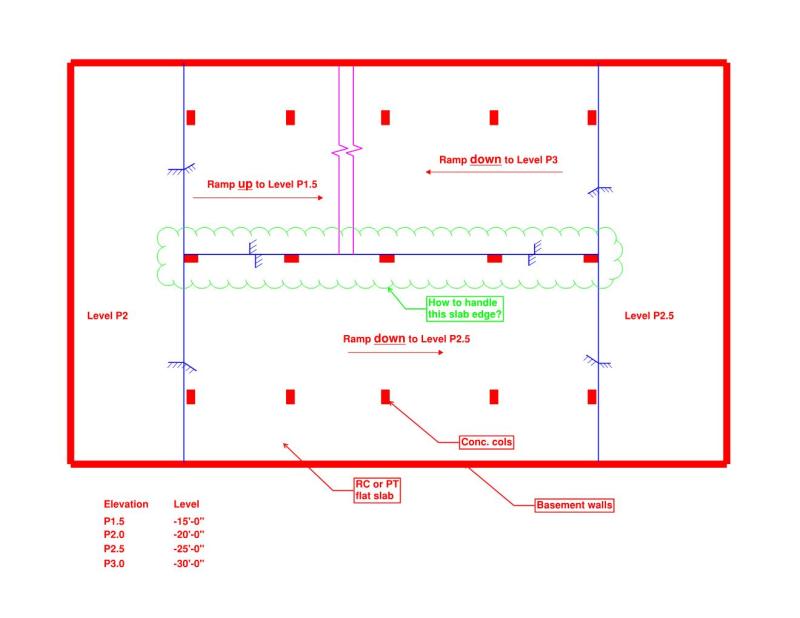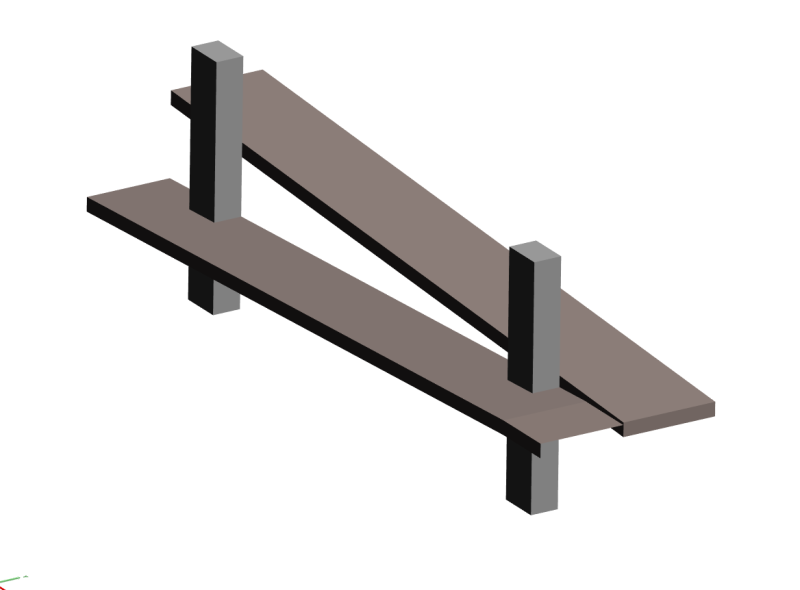DETstru
Structural
- Nov 4, 2009
- 395
I'm wondering how engineers typically handle crossing ramp/column interactions in solid slab/PT parking garages.
Attached is a 3D pdf showing the condition I'm talking about and some generic sketches below.
[ul]
[li]Architects seem to want to do it as shown in the attached PDF where one slab goes to the opposite side of the column and the other is only touching one face but I don't like this at all.[/li]
[li]I've seen details let the slabs overlap such that each slab touches 3 faces of the column. This leads to an issue in the location where the slabs are crossing and they are near the same elevation.[/li]
[li]I've also seen details showing the slabs terminate at the midpoint of the columns, which works pretty well as long as the punching shear pencils out. Seems like a nightmare to build though.[/li]
[li]One must also consider what is going to create the barrier between the slabs. Cable rail, concrete wall, CMU wall, or other.[/li]
[li]I've always been able to have a concrete wall running up the intersection, which solves all of this, but in this case the architect doesn't want that.[/li]
[/ul]


Attached is a 3D pdf showing the condition I'm talking about and some generic sketches below.
[ul]
[li]Architects seem to want to do it as shown in the attached PDF where one slab goes to the opposite side of the column and the other is only touching one face but I don't like this at all.[/li]
[li]I've seen details let the slabs overlap such that each slab touches 3 faces of the column. This leads to an issue in the location where the slabs are crossing and they are near the same elevation.[/li]
[li]I've also seen details showing the slabs terminate at the midpoint of the columns, which works pretty well as long as the punching shear pencils out. Seems like a nightmare to build though.[/li]
[li]One must also consider what is going to create the barrier between the slabs. Cable rail, concrete wall, CMU wall, or other.[/li]
[li]I've always been able to have a concrete wall running up the intersection, which solves all of this, but in this case the architect doesn't want that.[/li]
[/ul]


